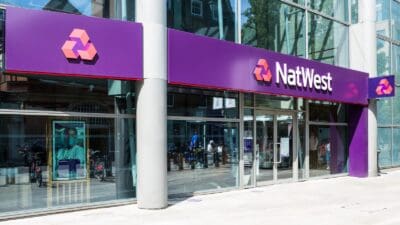I really don’t like buy-to-let. Why get involved in an investment class that requires such suffocating upfront costs? One where day-to-day running costs are becoming more and more expensive? And one that demands so much day-to-day involvement (unless you pay for the privilege of a managing agent)?
My belief is that stock investing is a better way to play the property rentals game. Though, with share markets continuing to sell off sharply, I can empathise with those who’d much rather park their capital straight in less-volatile bricks-and-mortar investments today instead.
Look North
I might not agree with you, sure. But if you’re determined to make the buy-to-let leap, then I’d like to discuss the latest Howsy rental yield data with you. They’re numbers that could make a critical difference for your returns in this increasingly-expensive market.
It shows that those wanting to maximise returns, landlords need to invest either in Scotland, Northern Ireland, or in the North of England, as the table below shows.
Top 17 Cities Ranked By Rental Yield
|
Location |
Average House Price 2019 |
Average Monthly Rent 2019 |
Rental Yield |
|
Glasgow |
£133,614 |
£883 |
7.93% |
|
Belfast |
£131,084 |
£716 |
6.55% |
|
Nottingham |
£144,284 |
£657 |
5.46% |
|
Manchester |
£181,071 |
£822 |
5.45% |
|
Sunderland |
£116,315 |
£517 |
5.33% |
|
Newcastle |
£159,632 |
£674 |
5.07% |
|
Leeds |
£185,628 |
£774 |
5.00% |
|
Bradford |
£136,947 |
£559 |
4.90% |
|
Edinburgh |
£265,679 |
£1,084 |
4.90% |
|
Bristol |
£280,437 |
£1,140 |
4.88% |
|
Liverpool |
£133,973 |
£532 |
4.77% |
|
Doncaster |
£128,851 |
£503 |
4.68% |
|
Birmingham |
£188,590 |
£724 |
4.61% |
|
Wigan |
£134,927 |
£514 |
4.57% |
|
Sheffield |
£167,003 |
£629 |
4.52% |
|
Wakefield |
£150,247 |
£548 |
4.38% |
|
London |
£472,524 |
£1,697 |
4.31% |
City Living
Howsy’s report also revealed the difference between yields in the city, in the county, and on the coast.
An average price of £184,228 in 2019 for a place in the city, allied with an average rent of £750 per month, created a rental yield of 5%. By comparison, the yield expected for market towns in the countryside sits at 3.72%, produced by an average property price of £238,388 and average rent of £717. Yields beside the seaside bring up the rear, at 3.59%, due to average property values of £238,086 and average monthly rents of £709.
A better way to play
Howsy’s latest report isn’t just important for helping prospective landlords to work out how to maximise profits, however. It reveals that, even in Britain’s buy-to-let hotspots, the potential returns on offer lag what share investors can expect to make. And by quite a long distance too.
Studies show that stock markets can make long-term investors a return of up to 10% a year. That’s 25% more than landlords in even the rental hotspot of Glasgow might expect to make.
What’s more, that 10% figure only refers to what the average stock market enthusiast can expect to make. Some people can (and have) made much, much more by getting involved in equity markets. By comparison, the average buy-to-let investor in the UK can expect a paltry 3.56% rental yield.
Investing in property is a classic safe haven play. And, in times like this, buy-to-let might be more appealing than ever. However, there are much better ways to make profits from property through UK share markets. Whether that be by buying shares in student accommodation providers like GCP Student Living, housebuilders such as Vistry Group, or buy-to-let property operator The PRS Group. There’s a galaxy of ways to get rich from bricks and mortar today.







